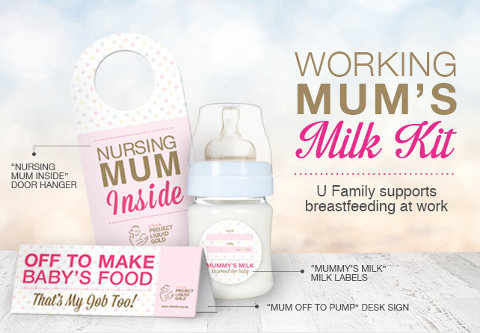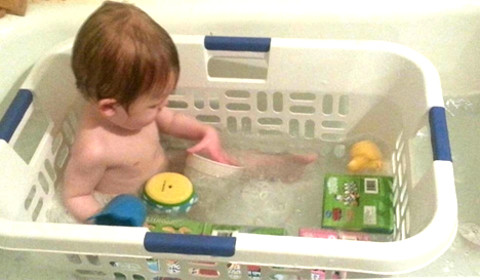Raising children comes with its blessings and struggles, and a working mother has her own unique challenges. The proportion of dual-income households in Singapore has increased from 41% in 2000 to 47% in 2010 – this implies that more and more mothers are juggling both work and home. The struggles are manifold and below are 8 struggles that only working mums will understand.

#1: Uncertainty starts from Pregnancy
Before having a child, one would not consider whether the employer or colleagues are ‘child-friendly’. However, once pregnant, many women struggle to find the right time to break the pregnancy news and worry about how well it would be taken. For instance, Kate shared ‘My work environment was very male-dominated and although the men were all fathers, they did not seem too pleased to find out that I was pregnant.’
Apart from uncertainty as to how employers will react and whether it would affect career advancement, a working mum also struggles with the dynamics at work and how her colleagues would adjust to her maternity leave and less over-time.
#2: ‘Flexible’ Working Hours
Even if the workplace is accommodating to working mothers, many haven’t officially implemented flexible hours. There are some companies who are open to working mothers working from home on certain days when the child is ill or if there is no alternative care for the child. However, such an arrangement may lead to unhappiness among colleagues or even with the supervisor (despite the flexibility being granted by the company).
In an effort to help women rejoin the workforce, NTUC’s Women’s Development Secretariat (WDS) recently held a Flexible Work Arrangement Job Fair on 13 November, where a good 40% (200 out of 500) of job seekers were shortlisted or offered a position. Sylvia Choo, director of WDS said “This is one way where we can look at the needs of the various job-seekers and tweak the working arrangements a little bit so that we can get them employers”.
Thus for Mom Yihong, she said she was very pleased that she no longer had to ask for exception after flexible working hours were adopted at her workplace.
#3: Breastfeeding is never Easy
Breastfeeding is difficult to begin with – ensuring baby’s proper latch-on, sufficient milk (not as easy for every woman!) and avoiding breastfeeding complications. Add in the need to express milk during office hours, it does take breastfeeding to a whole new level of difficulty. In a recent survey about breastfeeding at workplace conducted by NTUC U Family, 51% of mothers stopped providing breastmilk to their child because of workplace challenges such as the lack of time/flexibility, lack of space, nature of work and lack of support. And, 65% of respondents said that they did not have exclusive nursing space in their office.
NTUC’s Ms Cham Hui Fong has also pushed for the government to “madate some buildings to have common baby-friendly facilities for nursing mothers working in small companies which are unable to put up an area for lactation support” and also to “consider legislation on minimum lactation support in workplaces”. In a bid to support breastfeeding efforts, U Family launched Liquid Gold Project earlier this year, which donated new breast pumps to low income union members or their spouses.
For mom Kimmy, she found that in the beginning, it was difficult because her usual ‘lunch partners’ were expecting her to join them for lunch, followed by coffee. However, she had to cut short her lunch in order to find time to express milk.

#4: Maternity Obsolescence – Keeping in Touch with Work
It’s not just smartphone and computers that get obsolete fast – certain jobs get obsolete too, particularly in today’s environment of changing technology and corporate mergers. Therefore for some mothers, maternity leave does not equal to not working. For instance, working mom Adriana shared that during her maternity leave, she continued to keep in touch with the office by checking and responding to her emails. Fortunately, she had help from her parents during the time she had to do so.
Being back at work can also be a challenge for some mothers returning from maternity. Fortunately, flexible hours are increasingly adopted by many companies.
According to Ms Cham who has also been actively advocating for firms to implement Flexible Work Arrangement (FWA), mentioned that “If you want flexi-work to be successful, you need the buy-in from not just the CEOs, but also the stakeholders including the supervisors and the employees.” Just this month, MOM took heed of NTUC’s call and issued guidelines for employers on implementing FWA at their organizations which will help employers to meet their employees’ work-life balance needs.

#5: Late Bedtime vs Time with Children
This question becomes a daily challenge for most dual-income families. The time that working parents have at home is limited and their children want to spend time with the parents especially the only time they get to see their parents is in the late evening. However, late bedtime or inadequate sleep is associated with many adverse effects on growth and behaviour.
Working moms struggle daily, ‘Do I spend more time with my child for bonding or do I get my child to sleep earlier?’ There is no easy way to resolve this, especially when work may not allow one to leave on-time, but here are another 10 things that you should avoid to be one step closer to stepping out of the office doors by 6pm.

#6: Having Multiple Children to Care For
Whoever said having the second, third child becomes “easy peasy” probably never had the second or third child. Mdm Lin shared that any caregiver activity that she had to do for one child, she had to repeat the same act four times with four children. ‘Not all activities could be done concurrently, some activities like showering and brushing teeth had to take turns.’ Fortunately, she had much support from her parents and helper, but still, a working mom of four is never easy!

#7: Whole New Meaning to Annual Leave
For working moms of young children, there are six days of childcare leave annually. However, preschools are also entitled to six days of school closure. Most moms would attest that their annual leave days are now all childcare leave – it is leave for the child on his/her sick days, on birthday celebrations, school events and concert rehearsals. It is a struggle to find days to take a break (because that’s what annual leave is for!). Cheryl shared that she would at least use one day of annual leave per quarter for dating her husband or spending time with her friends, otherwise, life becomes very tiring!

#8: Weekday or Weekend – is still a Workday
Sometimes taking annual leave really becomes the only time to spend time connecting with self, friends and even spouse. For working parents, weekday is work and mostly, the weekend is another kind of work filled with bringing children to different classes or going outdoors or spending undivided time with the child. Cheryl further shared that weekend is often filled with its own busy-ness but to ensure that weekend has some relaxation, she would plan ahead that at least half of a Saturday or Sunday is spent at home.
There are indeed many struggles faced by working moms with work expectations and lack of time straining many aspects of juggling work, family and home. Therefore it is important for spouses to be united and work through challenges together.
If you are a mother who would like to return to the workforce, visit NTUC Women’s Development Secretariat (WDS) for more information.
* * * * *
Like what you see here? Get parenting tips and stories straight to your inbox! Join our mailing list here.
Want to be heard 👂 and seen 👀 by over 100,000 parents in Singapore? We can help! Leave your contact here and we’ll be in touch.



























































